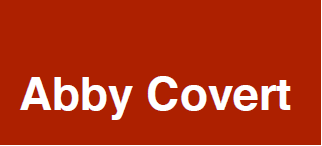On Fidelity
For years I have been fascinated with the interchangeable nature that the words “Fidelity” and “Resolution” seem to have in design conversations. They seem to be accidental synonyms in our fuzzy language of critique. Unlike the way I encounter them in the wild, I see a slight but incredibly important difference in the terms.
- Fidelity: How much you have figured out at this point?
- Resolution: How real does it “seem” at this point?
In my experience, using these words not like synonyms, but instead like gauges for our process, helps focus us on progressing forward not just shining up what we have.
Upping resolution before fidelity can ultimately slow you down
A classic example from the digital world would be a designer knowing very little about how to actually implement the right architecture to house a feature-set, so they instead produce a glossy screenshot of a interface using lorem ipsum, some form and list controls and the logo of the product. Then they photoshop that onto a picture of an iPhone and paste it into a keynote deck to present. Sound familiar?
“Isn’t this bad?”
The hard thing for many people to understand is that upping resolution before fidelity is not always a “bad” move. in some contexts in fact, it can be a necessary step that makers take as they imagine through the thing they are making.
In many fields of design this tactic is referred to as “speculative design” (Note: in the freelance world the word speculative seems to have the meaning of “unpaid” work but I can assure you that is not what I mean here)
From wikipedia:
“Speculative design doesn’t necessarily define a specific problem to solve, but establishes a provocative starting point from which a design process emerges. The result is an evolution of fluctuating iteration and reflection using designed objects to provoke questions and stimulate discussion in academic and research settings”
Speculative Design is Awesome…
Speculative design is awesome to get the imagination working. To fall in love with your idea enough to slog through the rest. Speculative design allows for a true exploration of the “what ifs” before the “what is” is fully nailed down.
Let’s say for example you are looking to get funding to work with a team to figure out the marketability, interface and feature-set of your product. You have a nut of an idea and you want other makers to buy into it. This is a time when raising the resolution before the fidelity is appropriate. But this is done for an audience intended to be sold to. This speculative interface is not to be used by those it is designed for. This interface is to be pitched, talked about, and considered. The fidelity of this interface is in fact quite low. They have not figured out “how it works” and therefore they haven’t really figured out “what it is” specifically.
They have however created an object of discourse. Something that represents what “it” might be like for the purpose of discussing it with others. Kickstarter campaigns use this tactic as a gold standard and it is effective and appropriate for that audience because the speculation is described transparently, with most projects even outlining costs and timelines to produce.
I experimented with this idea of speculative design this last weekend, when I made a children’s book about Information Architecture. I made this because I am searching for the right audience for this book and this speculative object will allow me to test reactions in a certain demographic.
Sometimes speculation isn’t awesome….
You can imagine how a speculatively based project goes bad quickly, if that same interface screenshot is used as the sole basis for a real interface design for example. At a critical point, especially for the time and cash-strapped, a speculative object can be mistaken or portrayed as more high fidelity then it is. Estimates of time and cost for production can be affected, resources involved can change, usability issues can go unnoticed and strategic failures can get amplified.
Level of speculation is a choice
I have several SVA POD students this semester who are thinking on the bleeding edge of technology for their thesis design work, yet they are not quite technologists. I have had several one-on-one conversations with them over the last 5 weeks and the single biggest question they all have is: what level of speculation is appropriate?
Unfortunately, there is no simple answer to this question. What is important is that the level of speculation is framed in a way that the level of fidelity achieved is clear to the observer of the artifact.
Some of them will be making things for a world that does not yet exist, while some of them will be working on products and services made for today’s world and market environment. Some of them want to pursue their idea past this semester while others are using this time to show what they can do in order to impress potential employers.
For this week I have challenged them to heighten the fidelity of something they have been working on without raising the resolution. I think this will help them to know what level of speculation they are comfortable with, and get them to pin down some boundaries on their scope.
My deck on Considering Fidelity is available for download. Stay tuned for my thoughts on Considering Resolution next week.
Thanks for reading.
